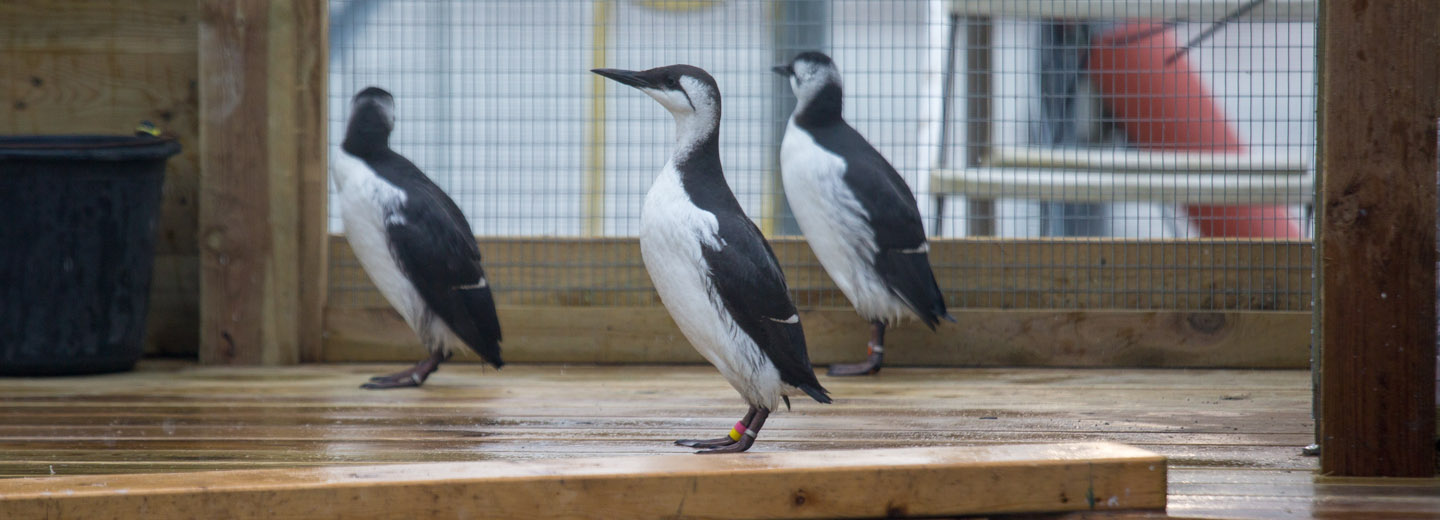
Murres serving research
SDU has started collaborating with Woods Hole Oceanographic Institution in the USA on researching marine birds’ hearing. The goal is to spare marine birds the noise from navy vessels, among other things.
Once, the Arctic and Antarctica were desolate areas hardly ever visited by humans. This is no longer the case; as the ice disappears, activity increases which will increasingly affect animal life.
For instance, it is known that marine mammals, such as seals and whales, are affected by noise created by human beings, when they are at sea. Noise from ship engines, construction work and sonars can disturb so much that animals lose the ability to orientate themselves in the water.
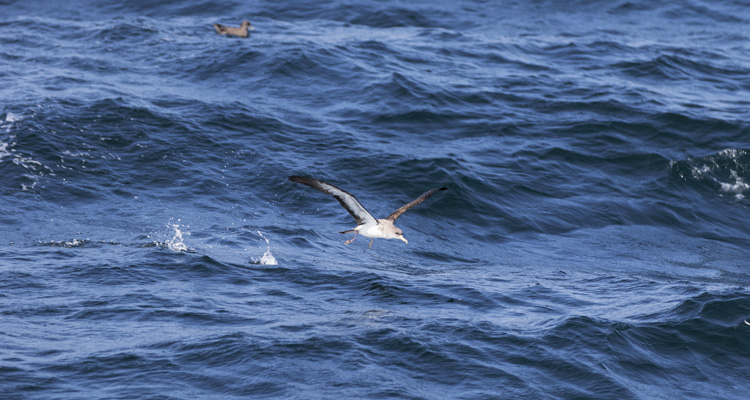 Marine birds can be found all over the world and they are characterised by spending most of their time at sea.
Marine birds can be found all over the world and they are characterised by spending most of their time at sea.
Last year, researchers from SDU were the first to document that marine birds can also hear under water.
US Navy interest
- Based on this knowledge, it is relevant to ask whether marine birds might also suffer because of the noise caused by human activity on the ocean, argues Kirstin Anderson Hanson, researcher in marine animal behaviour at Marine Biology Research Centre at SDU.
The American armed forces have had the same idea, which led the Office of Naval Research to contact the American research institute Woods Hole Oceanographic Institute with the goal of establishing a research project concerning marine birds’ hearing under water.
Woods Hole lacked part of the expertise, so they referred to Kirstin Anderson Hansen at SDU.
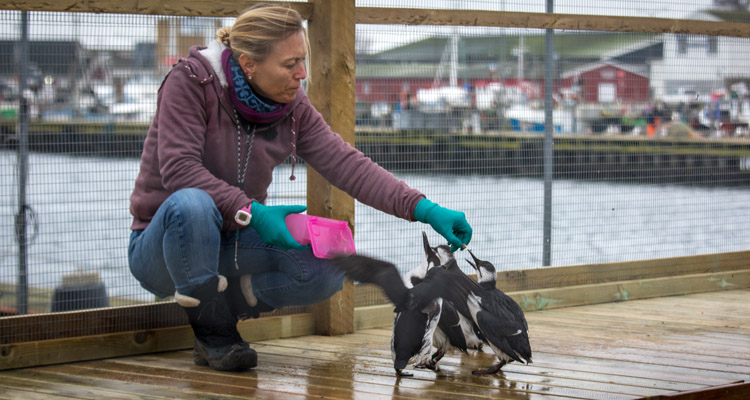 Kirstin Anderson Hansen in an export in training animals so that they can cooperate with researchers. The murres are fed four times a day which gives Kirstin the opportunity to study each individual’s interest in interacting with humans.
Kirstin Anderson Hansen in an export in training animals so that they can cooperate with researchers. The murres are fed four times a day which gives Kirstin the opportunity to study each individual’s interest in interacting with humans.
Working with cormorants
- As far as we know, we are the only ones in the world working on testing marine birds’ hearing under water, says Kirstin Hansen.
Some years ago, she and her colleagues started teaching two cormorants to cooperate with human beings in order to study cormorants’ ability to hear under water.
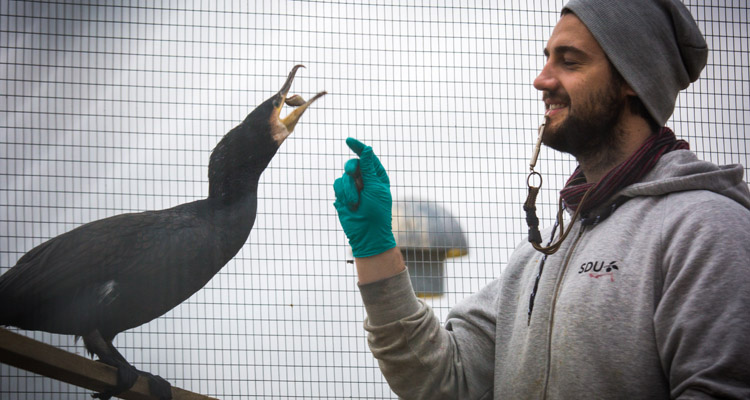
SDU researchers were the first to document that marine birds can hear under water. The study was carried out with cormorants. Here, the cormorant Loke is seen with the biologist Kenneth Sørensen.
- We taught them to reply “yes” or “no” to whether they could hear the sound we presented them with.
It is more difficult to work with birds
It took researchers a year to train the cormorants to work with them and another year to carry out a sufficient number of hearing tests for a scientific result that could be published. In comparison, it is possible to work with a seal after a couple of months training.
- Birds are more difficult to work with than mammals. They simply function in a different way. It is a little easier working with social birds as they don’t mind being with others and they have more curiosity compared with other types of birds that prefer living alone, explains Kirstin Hansen.
She has many years of experience training animals for research purposes and she is of the belief that all animals can be trained.
What motivates the animal?
- It is a question of discovering what motivates each animal species to do something for us researchers.
She is responsible for training murres and teaching them to participate in hearing tests.
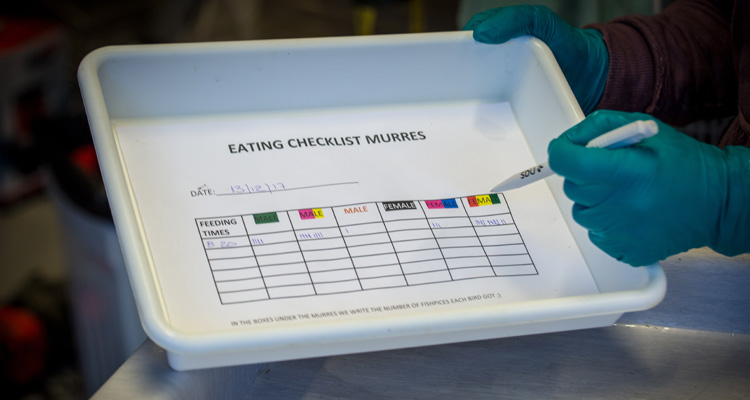 The researchers closely monitor how much each murre eats.
The researchers closely monitor how much each murre eats.
Six murres have arrived at the SDU research station in Kerteminde for this purpose and they are now getting to know their animal trainers and zoo keepers. The murres belong to Copenhagen ZOO and it is the plan for them to return at some point.
Say "yes" or "no"
Kirstin anticipates working long-term with about three of the murres. As was the case with cormorants, they will be taught to reply “yes” or “no” to whether they can hear the sound we presented them with.
- We are interested in frequency and intensity when testing marine birds’ hearing under water.
Hearing is crucial for hunrting
It has long been known that marine mammals can be dangerously disturbed by noise in the ocean. For instance, porpoises and other toothed whales use echolocation for hunting - i.e. they emit sounds, that are thrown back by the surroundings, which enable the porpoises to estimate if there are fish or rocks nearby and how far away.

The American armed forces are interested in finding out whether noise from ships and sonars, among other sources, disturbs marine birds.
- Noise in the ocean can be so strong that animals suffer reduced hearing, according to Kirstin Hanson.
Sources of noise can be ship traffic, sonars, offshore wind turbines, construction of oil rigs, etc.
The arctic penguin
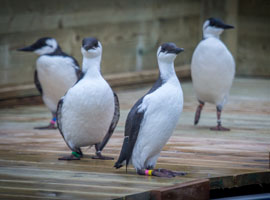
The murre with its black top side and its white underside resembles the Arctic penguin. It is distinctly a marine bird, which only comes on land during the breeding season.